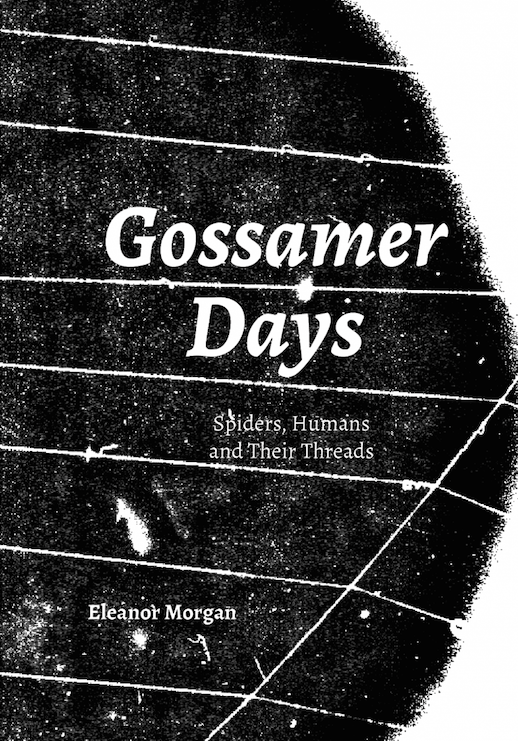 Gossamer Days: Spiders, Humans and Their Threads by Eleanor Morgan (Strange Attractor Press, 184 pages, paperback. Out now and available in the Caught by the River shop.)
Gossamer Days: Spiders, Humans and Their Threads by Eleanor Morgan (Strange Attractor Press, 184 pages, paperback. Out now and available in the Caught by the River shop.)
Review by Emma Warren
I was reading this perfectly weighted book on a train that was held outside London Bridge for what felt like days. In reality it was only an hour and a half but that’s a long time to stand in a packed carriage without any sense of when you’ll move again. I pulled the book out of my bag and greedily spun my way through chapters on ceremonial headdresses made from felted, layered cobwebs and natural vocoders made with fat round discs of spider egg case membrane – and so, it transpired, did the guy standing behind me. He tapped me on the shoulder when the train finally dragged itself into the station: “can you really spin with spider webs?” The arachnids that Morgan evokes with such balance and skill had lured us both to the edge of their web in a marvellously sticky moment.
This book is a product of more than ten years’ work. Back in 2004, artist and writer Morgan began collecting cobwebs with the idea of making a sculpture from spider silk and found herself drawn along the threads she collected into entire new worlds. “The stories of spider silk collectors stretch back to the origins of language, storytelling and making,” she writes at the start of the book. “They are ‘clues’; a word that comes from the Anglo Saxon cliwen meaning both a ball of yarn and a silk cocoon: a gathering of human and animal threads to be traced’.

Spider silk funerary tunic, photographed in Malakula by Ab Deacon, 1920s
Morgan obviously feels the connection between spiders and humans on a deep level but she’s not immune to the arachnophobia that affects so many people. There’s a section where she’s describing how spiders respond to vibration, and the stories that appear across time and space that have spiders congregating around singers or musicians. She decides to run her own experiment, fetching a web from the garden complete with spider in the middle, and placing it on a frame on the table in front of her. She ties spider thread around her throat – the part of the body that generates the most vibration – and attaches it back to the web. There’s one particular note she sings that makes the spider scurry down towards her like it’s hearing an insect-shaped frequency, and she panics, cutting the cord that is translating one biological creature’s experience into something that the other can understand.
Morgan avoids projecting homo sapien thinking onto the creatures she’s writing about. This allows them to emerge as a silent, barely-visible influence on human development, watching from the centre of the web as we have strung their threads across telescope optics and gun sights, made golden capes from their silk, and tried to replicate the superhuman strength of their webs in laboratories.

Nan Songer silking a spider, wearing glasses made from yucca plants
There are great characters throughout Gossamer Days: spider-goats with silk-making genes inserted into their DNA; artists, scientists and ancient astronomers who used arachnid threads and webs in their work; and of course the spiders themselves. A mark at the front of the book where you might expect information about the typeface has a visual representation of a spider’s way of seeing – four dots and two comma-shaped marks ¬– with the line explaining that the text is ‘divided by the eyes of Araneus diadematus’ or the common European garden spider. The comma-dot graphic is neatly employed throughout, breaking up paragraphs and reminding us of the edges of our human experience. We don’t just think; we think like humans. We don’t just make; we make like people. There are photographs, sketches and images of artworks throughout, making this fascinating book a very beautiful one too.
*
Eleanor Morgan recounts her quest for golden spider silk in this clip from Radio 4’s Natural Histories.
To celebrate the launch of Gossamer Days, Strange Attractor Press are hosting an exhibition at their studio, bringing together archival films, inventions, projections and images on spider spinning and silk collecting. Opens tonight, 6-9pm, then noon-4pm daily until 11 September. More info here.